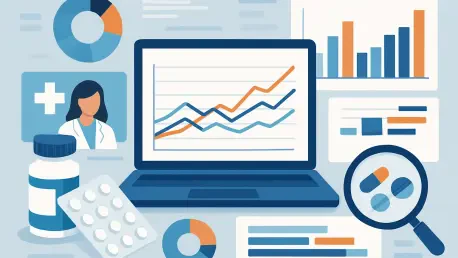Today, we’re thrilled to sit down with Oscar Vail, a renowned technology expert whose insights into data analytics are shaping the future of the pharmacy industry. With a deep background in emerging technologies, Oscar has a unique perspective on how data-driven strategies are revolutionizing everything from drug development to customer engagement in this critical sector. In our conversation, we’ll explore the transformative power of analytics in pharmacies, diving into its impact on cost reduction, trend prediction, competitor tracking, and the integration with broader healthcare systems. We’ll also touch on the challenges of managing complex data and the innovative tools driving this change.
How has data analytics reshaped the pharmacy industry over the past few years?
Data analytics has completely transformed the pharmacy industry by providing insights that were previously out of reach. It’s changed how companies approach everything from inventory management to patient care. Pharmacies now use data to optimize their operations, predict demand, and even personalize customer experiences. The ability to analyze vast amounts of information in real time has made decision-making faster and more accurate, ultimately improving efficiency and outcomes across the board.
Can you share a specific example of where data analytics has had a significant impact in pharmacies?
Absolutely. One standout area is supply chain management. Pharmacies are using data analytics to forecast drug demand based on historical sales, seasonal trends, and even local health patterns. For instance, during flu season, predictive models help ensure that antiviral medications are stocked in the right locations before demand spikes. This reduces shortages and prevents overstocking, saving both money and resources.
What types of tools or technologies are pharmacies currently relying on for data analysis?
Pharmacies are leveraging a range of tools, from cloud-based platforms to AI-driven software. Solutions like predictive modeling software help with demand forecasting, while business intelligence platforms provide dashboards for real-time insights. There are also specialized tools like Pharmawatch, which focuses on monitoring prescription trends and identifying risks like misuse or fraud. These technologies integrate into existing systems, making it easier for pharmacies to act on data quickly.
Why do you think so many leaders in the pharmacy and biopharma sectors view data analytics as a strategic advantage?
It’s all about staying ahead in a highly competitive and regulated industry. Data analytics gives leaders the ability to make informed decisions faster, whether it’s about launching a new drug or adjusting pricing. It’s a game-changer for spotting market opportunities and managing risks. With nearly 65% of organizations adopting or exploring AI and analytics, it’s clear that executives see this as essential for driving innovation and maintaining a competitive edge.
How are pharmacy companies using data analytics to reduce costs and accelerate drug development?
In drug development, data analytics is a lifesaver for both timelines and budgets. Companies analyze clinical trial data to identify promising compounds early, reducing the number of failed experiments. AI models can also simulate drug interactions, cutting down on costly lab work. This means getting drugs to market faster and at a lower cost, which is huge when you consider the billions often spent on R&D.
How does data analytics enable pharmacies to predict trends like drug demand or customer behavior?
Predictive analytics uses historical data, market trends, and even external factors like weather or disease outbreaks to forecast needs. For drug demand, it means knowing what medications will be in high demand before it happens. For customer behavior, it’s about understanding purchasing patterns—like when people are likely to refill prescriptions or buy over-the-counter products. These insights help pharmacies plan better and avoid disruptions.
What benefits come from connecting pharmacy data with broader healthcare systems?
Connecting pharmacy data with healthcare systems creates a more complete picture of patient health. It helps track medication adherence, treatment outcomes, and even broader trends like regional health issues. For example, pharmacies can see how often patients follow through on prescriptions and work with providers to improve compliance. This integration also reveals larger patterns, like rising demand for certain treatments, which can inform business strategies.
How are pharmacies using analytics to monitor competitor activity and stay ahead in the market?
Analytics lets pharmacies keep tabs on competitors by tracking things like pricing strategies, new product launches, and customer loyalty trends. They use data from market reports and sales figures to see how others are performing and adjust their own approaches. For instance, if a competitor lowers prices on a popular medication, a pharmacy might respond with promotions or bundled offers to retain customers.
What are some of the biggest challenges the pharmacy industry faces in managing and utilizing data?
The pharmacy industry faces some tough hurdles with data. First, there are strict regulations around patient privacy, which limit how data can be used and shared. Then, there’s the issue of unstructured data—think handwritten notes or inconsistent records—that’s hard to analyze without significant preprocessing. Companies are tackling this by investing in better data management systems and training staff to ensure compliance while still extracting valuable insights.
What’s your forecast for the role of data analytics in the pharmacy industry over the next decade?
I believe data analytics will become even more central to the pharmacy industry in the next ten years. We’ll see deeper integration of AI and machine learning, not just in drug development but also in personalized patient care. Tools will get smarter, offering real-time insights at every level—from supply chains to individual prescriptions. The focus will also shift toward using data to improve health outcomes on a population level, connecting pharmacies even more closely with public health initiatives. It’s an exciting time, and I think the potential for innovation is limitless.









